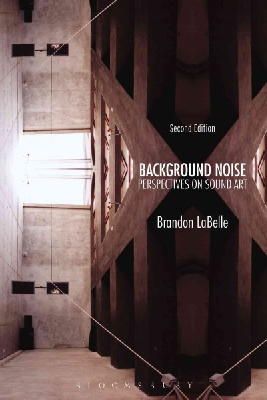18%OFF

Stock image for illustration purposes only - book cover, edition or condition may vary.
Background Noise, Second Edition: Perspectives on Sound Art
Brandon Labelle
€ 43.99
€ 36.03
FREE Delivery in Ireland
Description for Background Noise, Second Edition: Perspectives on Sound Art
Paperback. "Follows the development of sound as an artistic medium and illustrates how sound is put to use within modes of composition, installation, and performance"-- Num Pages: 376 pages, 30 bw images. BIC Classification: AVA; AVG. Category: (P) Professional & Vocational. Dimension: 230 x 153 x 27. Weight in Grams: 574.
Read more
Background Noise follows the development of sound as an artistic medium and illustrates how sound is put to use within modes of composition, installation, and performance. While chronological in its structure, Brandon LaBelle's book is informed by spatial thinking - weaving architecture, environments, and the specifics of location into the work of sound, with the aim of formulating an...
Product Details
Publisher
Bloomsbury Publishing Plc
Format
Paperback
Publication date
2015
Condition
New
Number of Pages
376
Place of Publication
New York, United States
ISBN
9781628923520
SKU
V9781628923520
Shipping Time
Usually ships in 5 to 9 working days
Ref
99-50
About Brandon Labelle
Brandon LaBelle is an artist and writer working with sound culture and locational identities. His previous book, Background Noise: Perspectives on Sound Art, was published in 2006 by Bloomsbury Academic. He is the editor of Errant Bodies Press and organizer of the related Surface Tension project. He is currently Professor at the National Academy of the Arts in Bergen, Norway.
Reviews for Background Noise, Second Edition: Perspectives on Sound Art
The rise of a prominent auditory culture, as seen in the recent plethora of art exhibitions on sound art, in conjunction with academic programs dedicated to "aural culture", sonic art, and auditory issues now emerging, reveals the degree to which sound art is lending definition to the 21st Century. And yet sound art still lacks related literature to compliment, and...
Read more